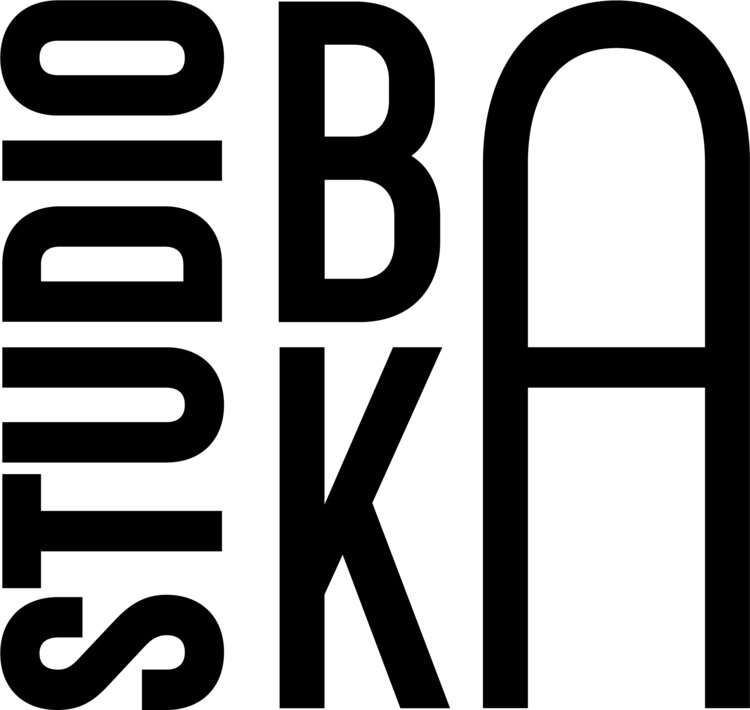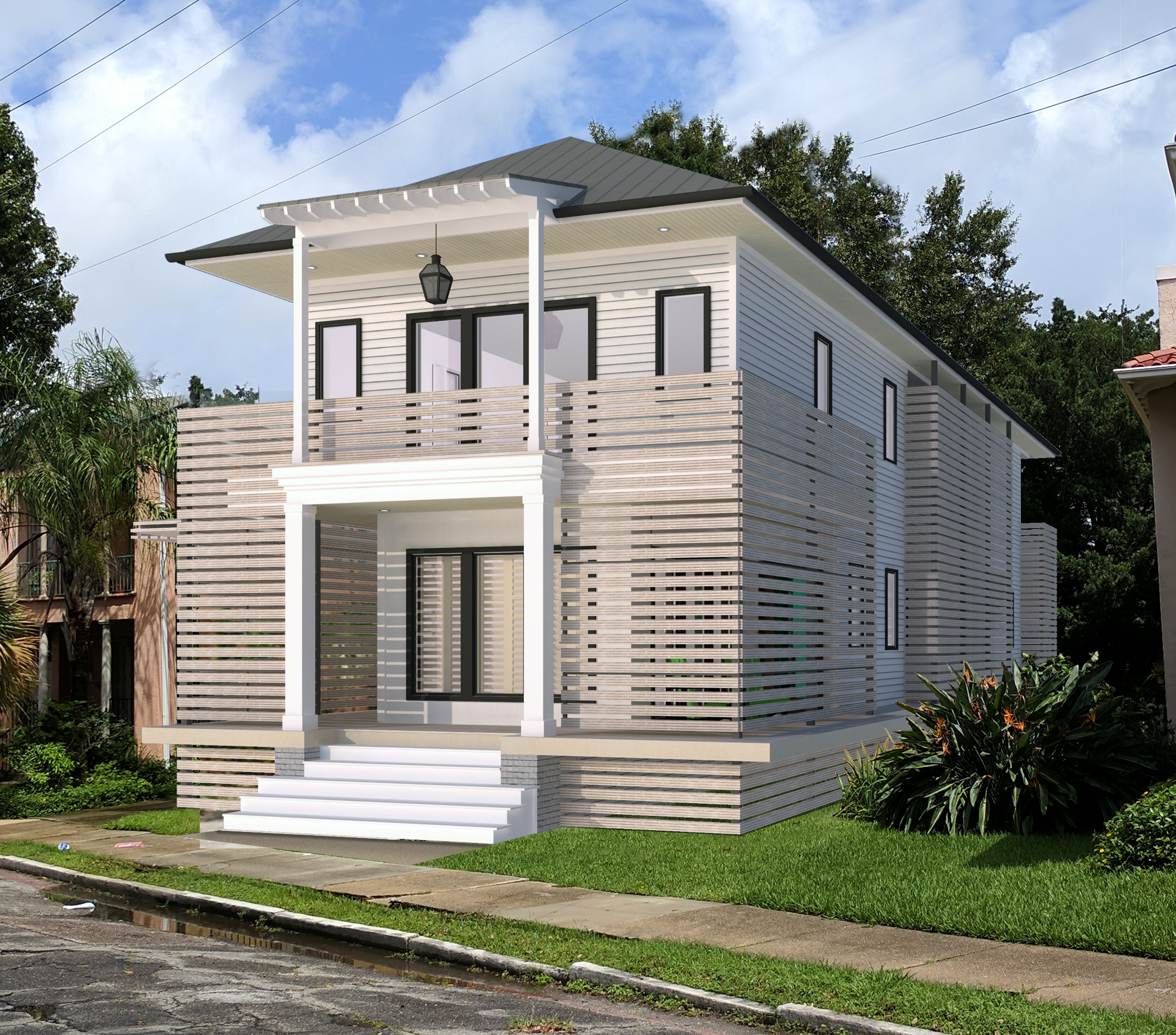Can you? Yes. Should you? No. Unless you work in the construction industry and are familiar with contracts and coordination, the perceived savings of going it alone tend to evaporate quickly. While an optimistic "do-it-yourself" attitude is admirable, be mindful that these professions exist out of necessity. Take a quick test and see if you can answer 'yes' to the following questions:
1. Do I have 10-20 hours a week to dedicate to meeting with sub-contractors on site?
2. Am I tenacious enough to communicate effectively with professionals when we disagree?
3. Can I make decisions quickly and confidently?
4. Am I a good planner who remains organized from the beginning to the end of a project?
If you scored a 100, welcome to the world of construction management!
If not, a contractor could help you to save money, even though you are paying him/her 15%-20% on top of construction costs, and also consider that the contractor is saving you an immense, lengthy headache. Financially it’s generally a wash, and mentally, you are saving your sanity, which certainly has value as well!
Clients often ask me: "Can I purchase all the materials to help save on overall costs?" The answer is also yes, but let me add my two cents here. You will save on overall costs because your purchase of materials will reduce the percentage that the contractor tacks on material and labor. However, the contractor can purchase material with his/her trade discount. So where you may spend $5,000 on hardwood flooring flying solo, the contractor may pay $4200, and charge ...let's say... $840 in overhead, for a total of $5040, so you have saved yourself $40. Is it worth it to have to measure and estimate square footage and overage, coordinate the delivery, open the boxes to acclimate the wood to the moisture content of the house, and make any other preparations recommended by the manufacturer? I think most people would answer "not really". If you would do these tasks for $40 because you enjoy it, it could be time for a career switch, and again, welcome to the world of construction management!
BUT! There are some materials we do encourage our clients to purchase on their own, but be sure to review the contract with suppliers and opt for warranties. Some of those items are:
- hardware
- decorative light fixtures
- wallpaper
- appliances
- plumbing fixtures
If you need help selecting these, our interiors studio can assist with selections and pricing.For more information about my company, Studio BKA, and the many ways we can help you with your project, please check out: www.studioBKA.com! If you have any questions you'd like to see answered in this series, send me an email at kim@studioBKA.com.
Architecture in 2047
The American Institute of Architects challenged us to think about how the architect's practice will look in 30 years. I was inspired to respond by thinking of recent advances in design technology as the infancy of the every tools of the future architect, and I was inspired a little bit by the upcoming release of Blade Runner 2049.
Architecture’s current trajectory will continue to release projects from the silo of the office desktop, and the silo of the architect's brain. Virtual and enhanced reality will pull meetings from board rooms and into infinite occupiable versions, the project constructed and deconstructed many times before breaking ground. Time between iterations will become faster and faster. Hive communication in the Cloud will allow a continuous exchange to more thoroughly describe ideas. Expertise will be shared more readily, as the design community follows the sharing economy down alternate open-model paths that have already started to reshape the way business is done. Lessons learned will more readily be accessible and applied, like a software patch to the design. The end product will be ever more precisely in line with human intention and expectation for the built environment; and the efficiencies afforded by this fine tuning will in turn reduce the burden on the planet.
The architect’s role must evolve to harness the power of the growing current of data and computational solutions, to shape the project around central tenets and targets, and to communicate the implications of numerous decisions - to be a guiding force and a fixed point in a swarm of forces and numbers. This role as a guiding force will make the architect of the future an indispensable figure for any size construction project.
Economic forces will attempt to drive projects to serve a narrow purpose, however, it will also be the architect’s responsibility to respond with technology and data to show the undeniability of maintaining sustainability, responsibility and urban connectivity for a tenable world that can continue to grow and thrive at the rates we expect. Undermining these forces will be a continuous battle, but one that the architect can be especially equipped to orchestrate a stand against.
The Flexessory House
The Flexessory House is a personal and professional response to how we think about urban infill development in New Orleans.
What makes New Orleans’ neighborhoods among the richest in character and memory in the world, a tourist attraction in and of itself? Its HOUSING STOCK.
What's so great about it? Two things – its ability to adapt to its surroundings and its ability to adapt to the needs of the people. So, really, one thing: resilience.
Houses here grow, adapt – they FLEX. Sometimes literally with the moisture content in the air. And they are still standing through hurricanes, design fads, and shifting demographics.
So what do we mean by FLEXESSORY?
FLEX-ing Skin
We took inspiration from the traditional Japanese ‘engawa’ space, a light-footed raised wood structure the building’s perimeter. This zone serves as a linear adaptation of the classic NOLA porch, providing shade, communal space, privacy and debris protection. Wood screens attached to this can flex open or closed to provide varying degrees of protection.
engawa (縁側 or 掾側)
is a typically wooden strip of flooring immediately before windows and storm shutters inside traditional Japanese rooms. Recently this term has also come to mean the veranda outside the room as well, which was traditionally referred to as a nure'en
Shutters & Engawa Spaces
FLEX-ing Occupancy
Houses here have long, varied histories because they never ceased to be useful, even if just enough to not demolish. A house may have started as a stately four-bedroom home for a large upper-class family, and may have later been split up into a upstairs and downstairs unit, after which it might have converted a carriage house into a rear apartment. Later, after central air was added and the plumbing easily changed out since the floor is raised, it might find new life as a bed and breakfast, a law firm office, or might again serve as a large home for a well-to-do family. Or maybe it stays a four-plex with a carriage apartment, long after zoning laws have made such an arrangement unrepeatable.
About those zoning laws – across the country, zoning laws have historically attempted to pin down a property to a very specific and isolated use. Often, a single-family house is allowed an ACCESSORY use – often with many caveats and rules in place to keep that other use from becoming another dwelling. But demand for accessory dwellings lives on, often in bending or ‘hacking’ zoning rules and grandfathering, and for good reason. It allows for additional homestead income, while easing housing stock shortages for small families, college students or the elderly, and adding to the overall neighborhood value and tax base - wins all around.
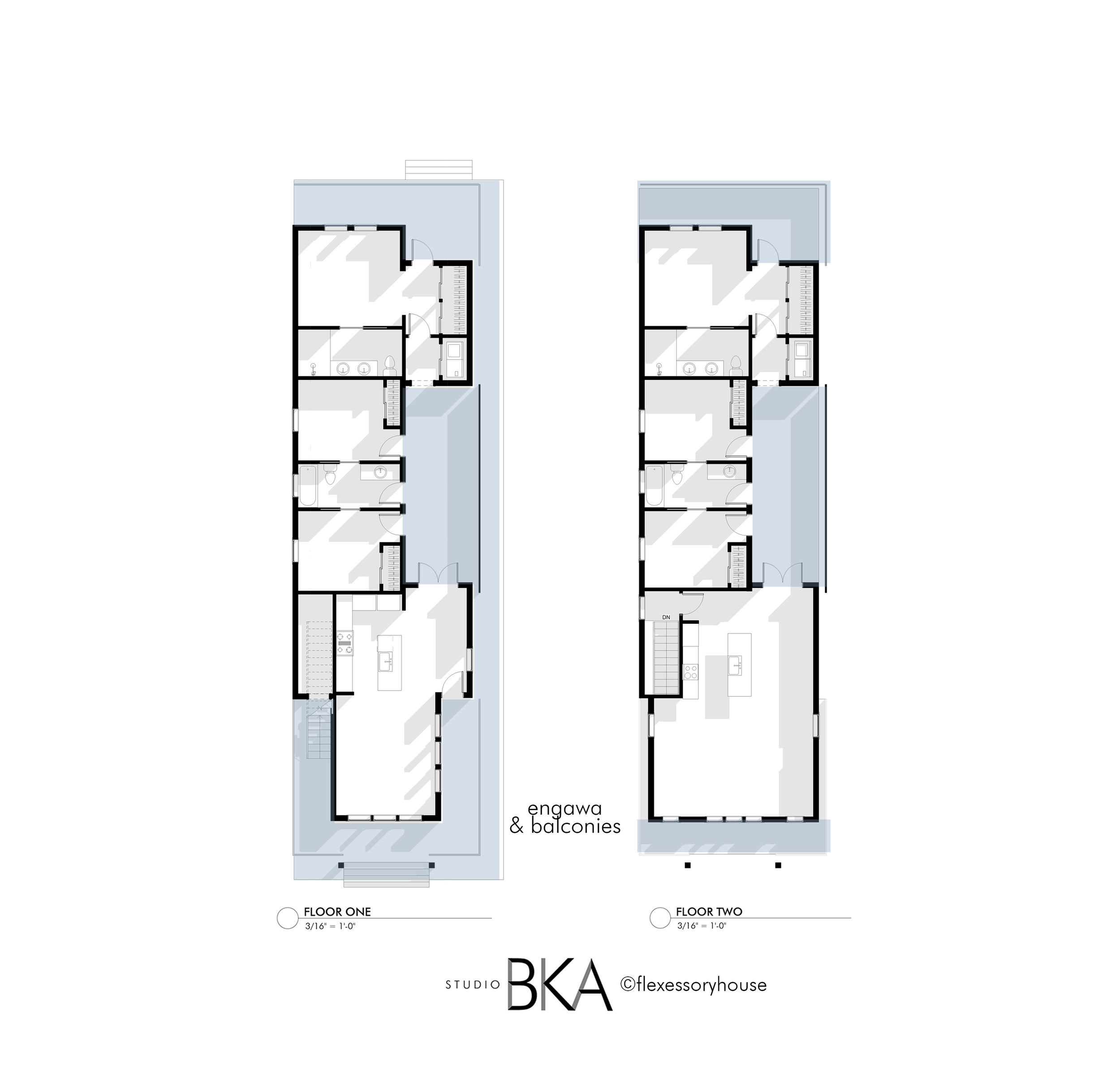
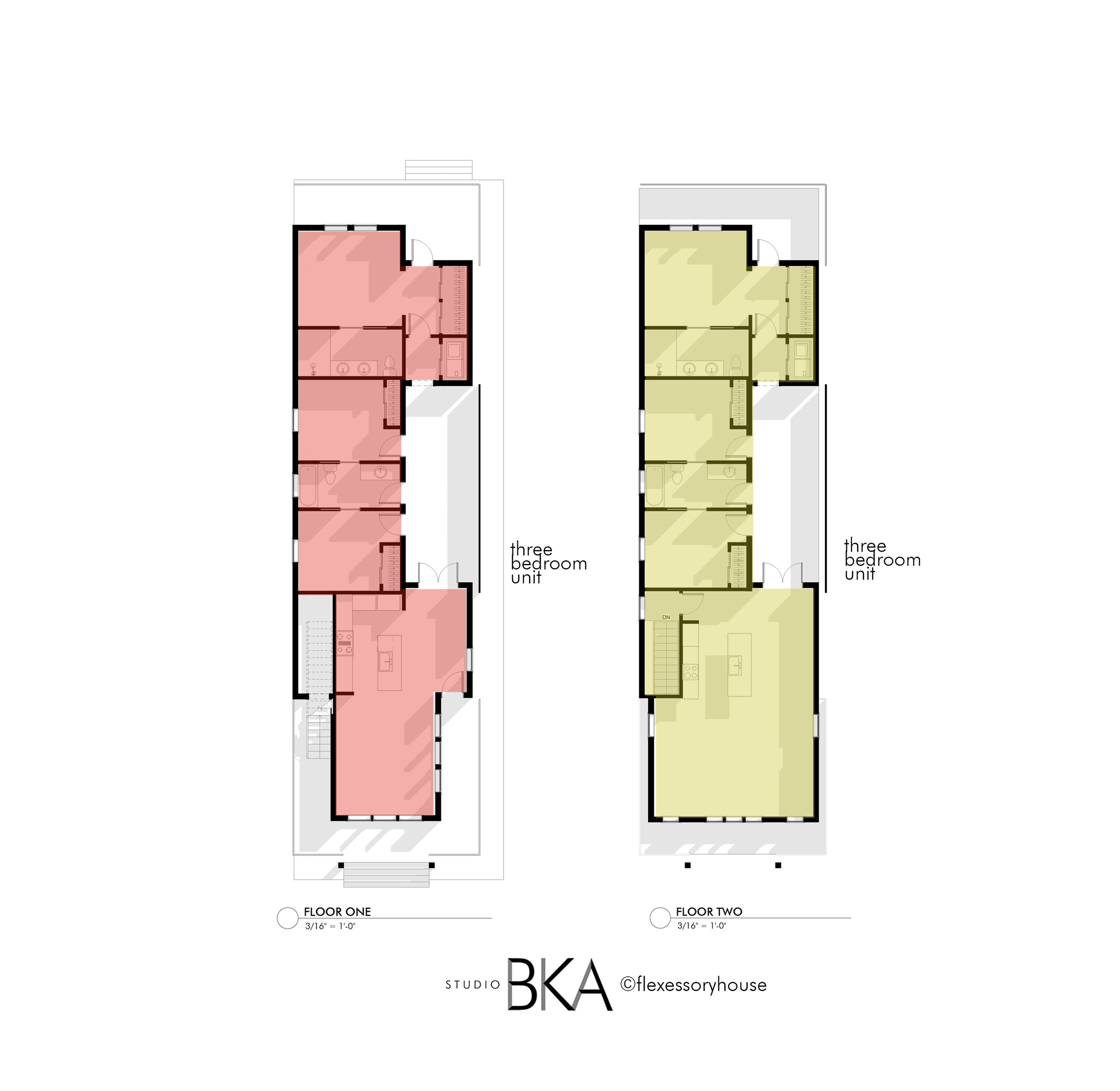
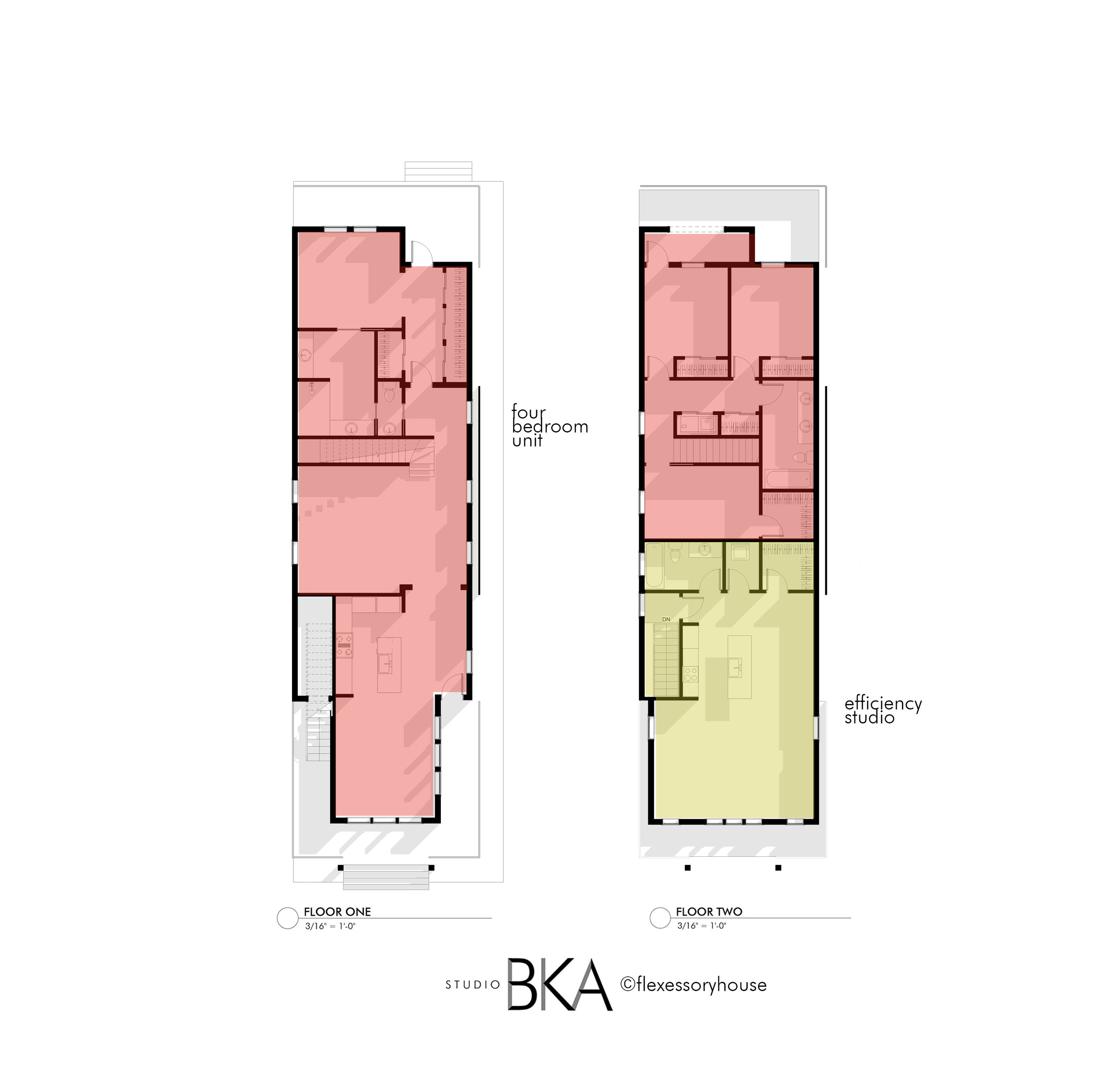
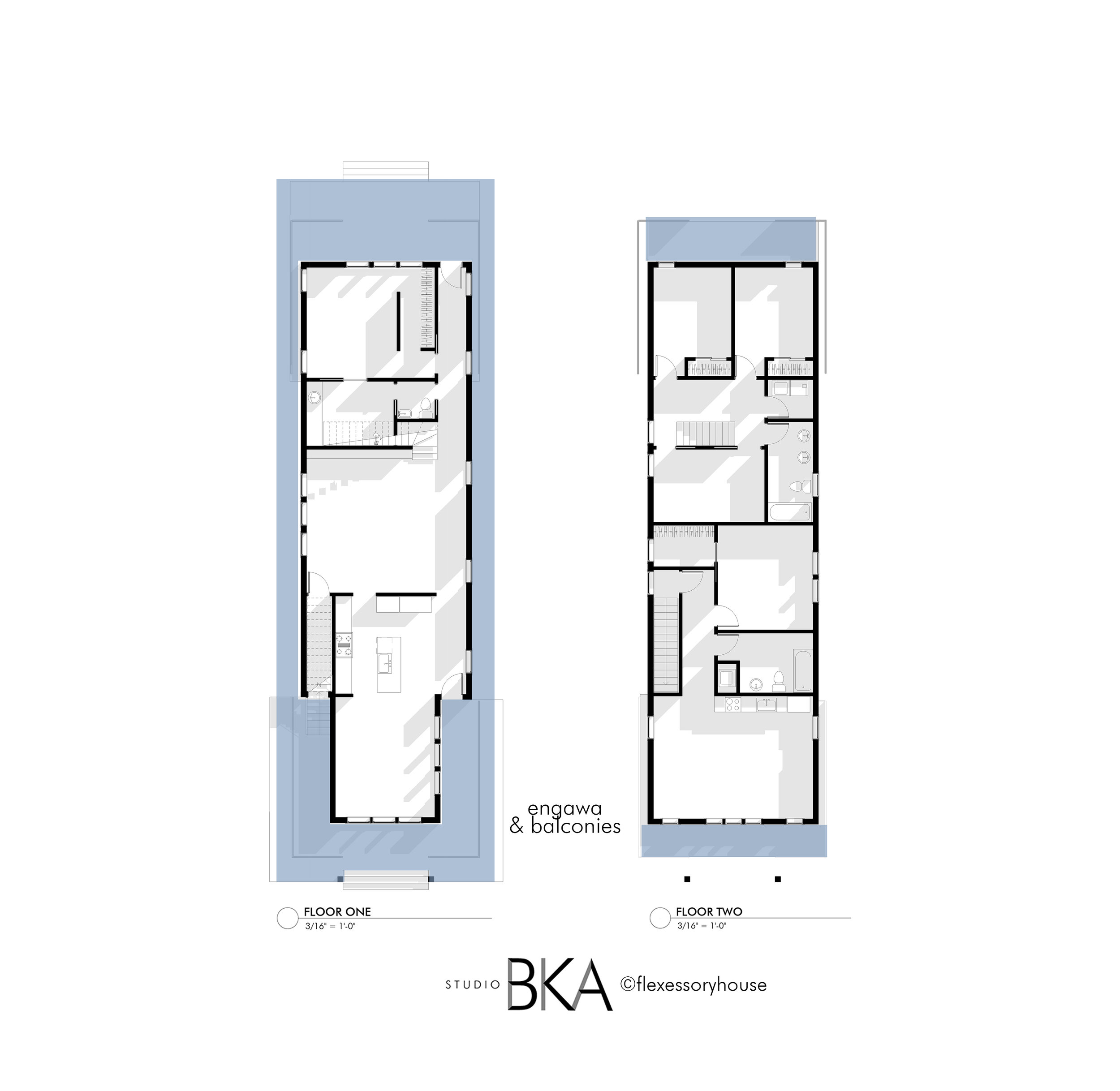
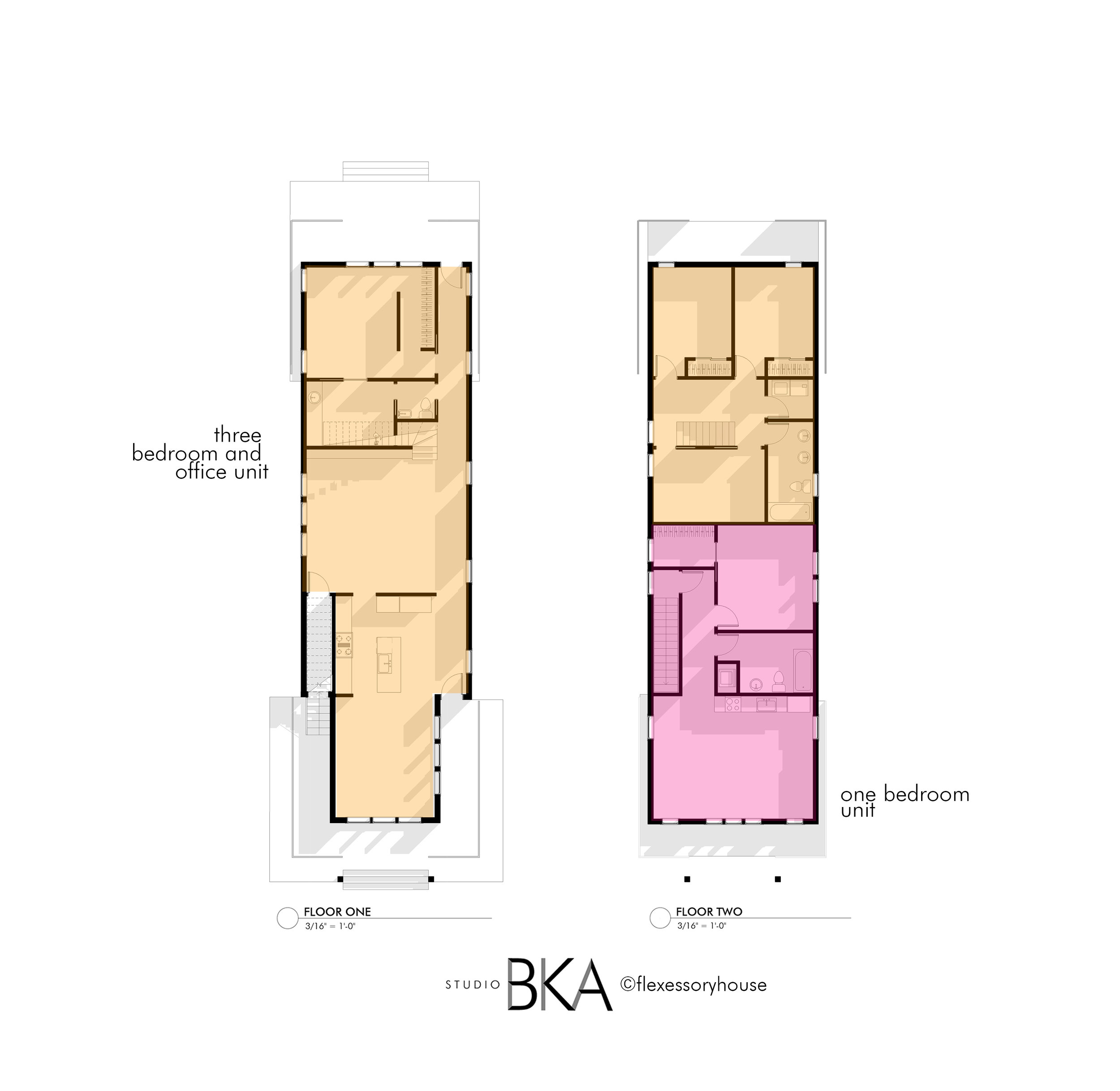
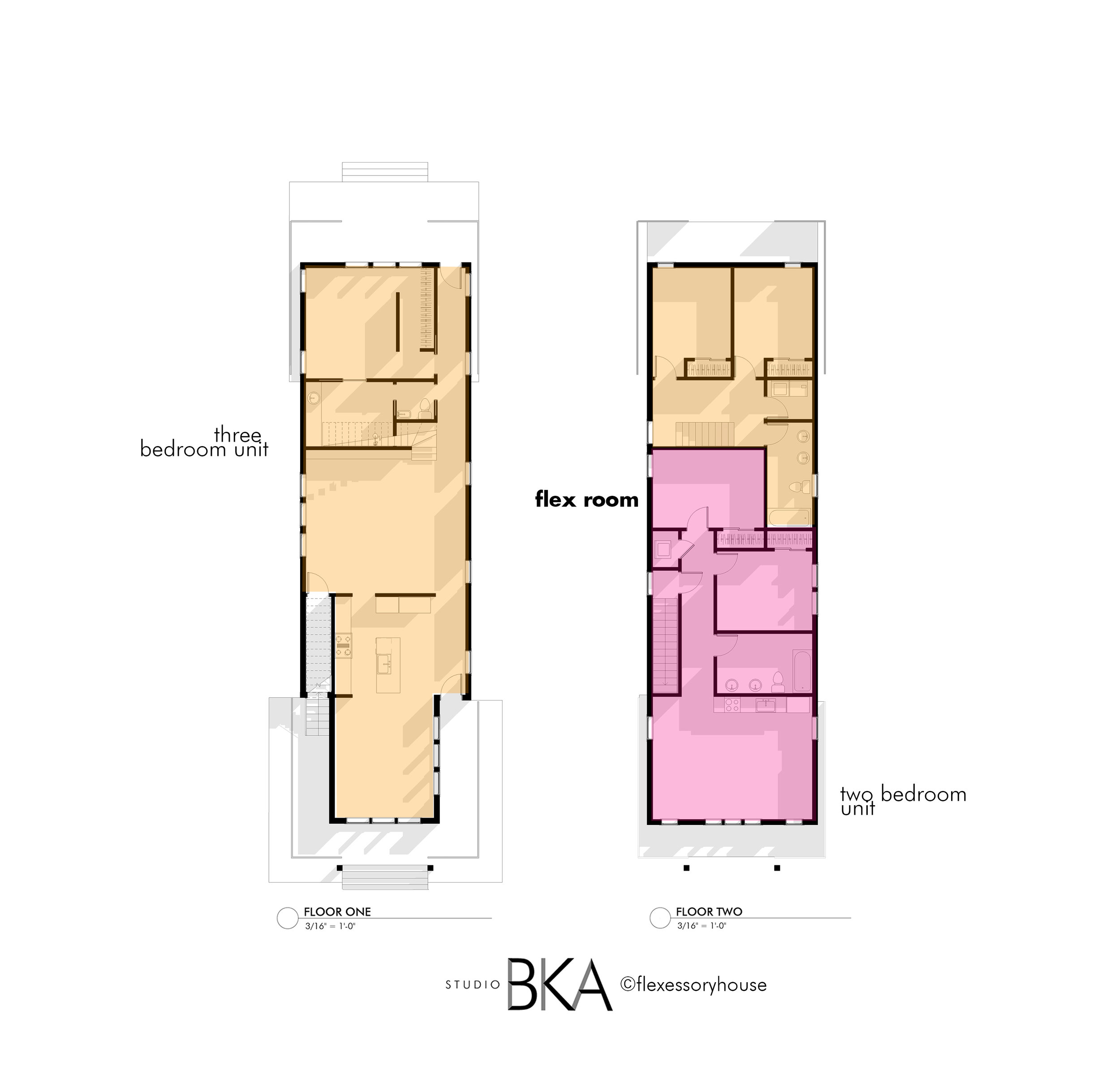
Flex + Accessory (Dwelling) = Flexessory
The FLEXESSORY house is a contemporary approach to the traditional shotgun plan, offering more flexibility to a family living, growing and shrinking in the house; or for different kinds of families to subsequently inhabit the house. Within the footprint of a typical two-family zoned lot, the house offers several easily reconfigured plans to allow for various sized units for an elderly family member, a college student, a small family, a vacation rental.
And though it could be a single-family home, it makes too much sense not to use it in a way that helps put more families back in New Orleans, creating more value, and reinforcing the historic use patterns that can continue the centuries-long reputation of New Orleans neighborhoods as the best in the country.
Detail Hacks- The Shower Niche
A friend recently sent me a picture of this niche (shown below) and asked how the edges are generally resolved. I thought our conversation would make for a great blog post series called "Detail Hacks" since not everyone building their dream home has years of experience as an architect or builder.
The shower niche is a great detail when executed properly but unless you are a designer, architect or builder, you may overlook a couple of small things that could change the overall appearance. I will give you a few solutions and you can decide which one looks appropriate in your house!
You probably didn't think about the raw edges of the tile when you were in the tile store trying to make a decision!
Solution 1: the Schluter strip
The addition of metal gives the bathroom a contemporary vibe. The Schluter strip is essentially a transition strip that captures the raw edge of the tile.
Solution 2: Finished edge or bullnose edge
Some tile offer finished or bullnose edges that give the niche a clean look. This detail is great for traditional or modern residential projects.
Solution 3: Marble
Let's pretend you selected a subway tile that doesn't offer finished or bullnose edges, what do you do now? One solution is to use marble or quartz as the inset material. It adds a nice contrast and its likely you have this material left over from the counter top fabrication.
There you have it! Three solution to finishing out your shower niche! Good Luck and don't forget to subscribe to our newsletter for more architecture inspiration!
What's the Big Deal with the Bid Phase?
The bidding phase, also know as the procurement phase, is sometimes forgotten as one of the most important phases in your project process. While the drawings will illustrate the scope of work. The bidding phase will help establish terms and conditions for the scope of work. This phase is necessary to help mitigate head butting down the road when conflict arises.
Read More